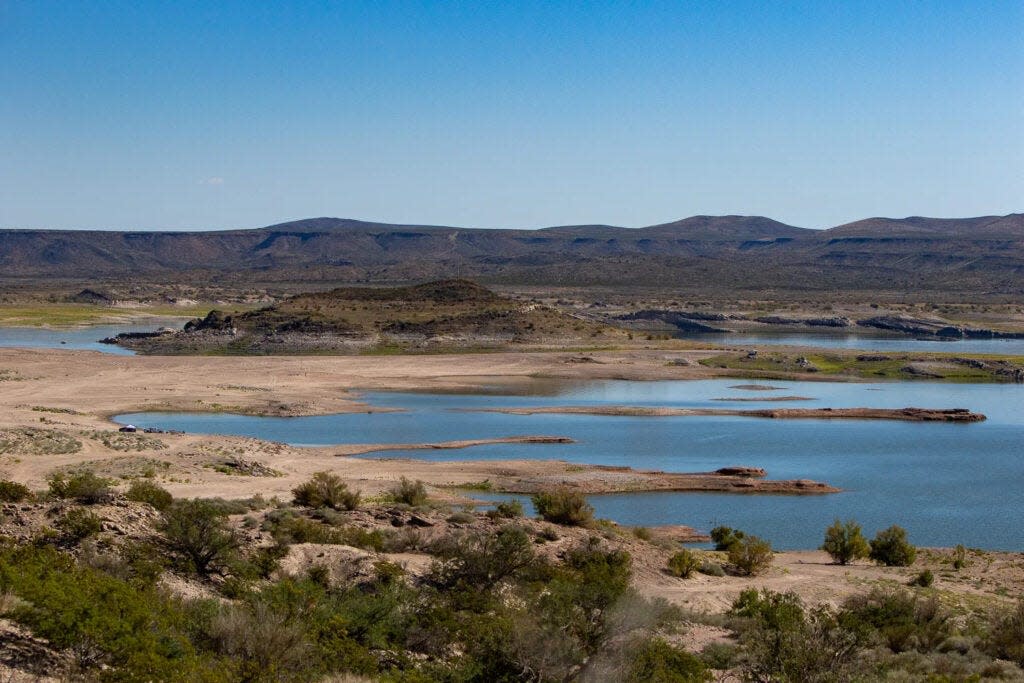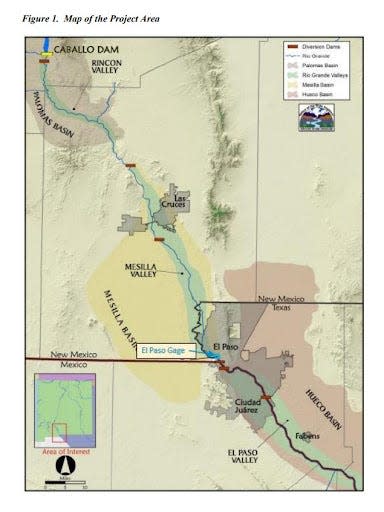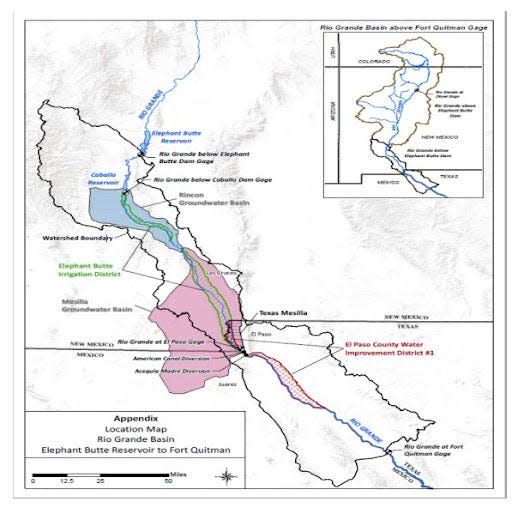Possible deal to end Rio Grande SCOTUS case becomes public

This story was originally published by Source New Mexico.
A proposed agreement between Texas, New Mexico and Colorado was unsealed Monday, months after the states announced a deal to end nearly a decade-old Supreme Court case over Rio Grande water.
The deal would amend the 83-year-old legal basis for how the three states split water from the river under the Rio Grande Compact. If allowed by the Supreme Court, the decree would end the lawsuit that’s called Original No. 141 Texas v. New Mexico and Colorado. The case has stretched over nine years and cost New Mexico and Texas taxpayers tens of millions of dollars.

Among the changes, Texas’ share of Rio Grande water would be measured at a point on the state line at an El Paso Gage instead of NM’s current requirement to deliver Texas’ water 100-plus miles upstream at the Elephant Butte Reservoir.
The agreement offers a new set of calculations to determine what water is owed to southern New Mexico farmers and far west Texans, and incorporates groundwater pumping in the formulas.
Finally, it also offers conditions for New Mexico and Texas to handle disputes about over- or under-deliveries of Rio Grande water.
To provide water for those deliveries, the New Mexico Office of the State Engineer could shut down wells, or use other limits such as paying farmers to retire land from farming to save irrigation water, court documents show.
In sworn statements attached to the proposed agreement, top water officials from New Mexico and Texas urged the Supreme Court to accept the proposal.
Bobby Skov, the Rio Grande compact commissioner for Texas, called the deal “fair” and “consistent with the compact.”
State Engineer Mike Hamman, who is also New Mexico’s compact commissioner, said the agreement resolves the long-standing issues between the two states and offers clear directions for how to stay in compliance with the agreements.
“I anticipate the consent decree will help the states avoid future conflicts,” Hamman wrote.
A key change to the document includes transfers of water between New Mexico and Texas irrigation districts to balance out years when New Mexico pumping or diversions cause not enough Rio Grande water to reach the state line.

If the state fails to meet new delivery requirements for three consecutive years, then the agreement requires the state to send additional water from the New Mexico irrigation district to the Texas irrigation district.
In order to provide water to make up for any shortfalls, Hamman offered seven bullet points in his letter supporting the agreement.
Hamman said the N.M. Office of the State Engineer could curb groundwater pumping; monitor groundwater pumping, buy water rights to retire groundwater wells; fallow farmland temporarily; increase conservation in both municipal and agricultural use; or attempt to import water to the Lower Rio Grande.
Hamman warned the state office will enforce well shutdowns if voluntary or compensated measures aren’t working.
New Mexico is still embroiled in the lengthy court process that started in 1996 to determine the legal order of water rights between Caballo Reservoir and the state line for farmers, municipalities, businesses and the federal government.
As for next steps, a hearing on the proposed decree is tentatively scheduled for February 2023.
How we got here
The Supreme Court case was sparked by decades of litigation over the Lower Rio Grande — the region between Caballo Reservoir and where the river often evaporates above Fort Quitman, about 90 miles along the Texas-Mexico border.
In 2014, Texas filed a complaint in the Supreme Court alleging New Mexico groundwater pumping below Elephant Butte illegally captured Rio Grande water promised to Texas.
The proposed agreement is the product of monthslong confidential negotiations between the parties in the case — New Mexico, Texas, Colorado and the federal government. The discussions included input from impacted organizations such as farming associations, the two regional irrigation districts, the cities of Las Cruces and El Paso, New Mexico State University, and water utilities in Albuquerque and El Paso.
In earlier filings, the federal government and El Paso’s major irrigation district asked the special master overseeing the case to throw out the proposed decree because it was the result of an incomplete settlement and makes concessions the states cannot enforce, according to legal filings.
Last week, Judge Michael Melloy overruled the federal government’s arguments that the proposed agreement must be kept secret, ordering most of the documents to be made public.
The United State’s objections to the proposed decree remain filed under seal, and are not public at this time.
Danielle Prokop is a freelance reporter based in the Borderlands.
Others are reading:
This article originally appeared on Las Cruces Sun-News: Possible deal to end Rio Grande SCOTUS case becomes public

